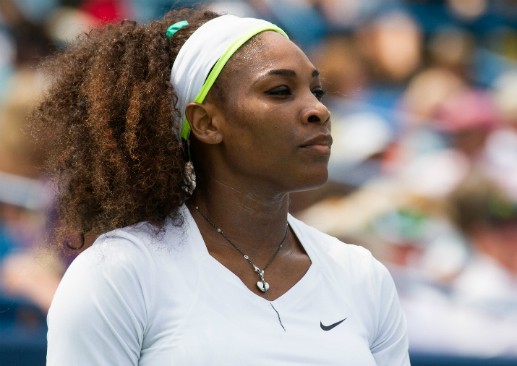Serena Williams is one of the most dominant athletes in the world, but you wouldn’t know it from her endorsement deals.
According to Forbes, the 33-year-old tennis star ranks No. 47 on its World’s Highest-Paid Athletes list. What’s even more surprising, is the fact that Russian Maria Sharapova — Williams’ far less decorated rival — came in at No. 26.
Sharapova has an impressive tennis record. The 28-year-old has won five Grand Slam titles in her career, and has built an impressive business around her personal brand.
Compared with Williams, however, Sharapova looks like a small blip in tennis history.
Williams has won 21 Grand Slams, has an impressive six wins per loss throughout her career, and just made history this summer by completing a Serena Slam — winning all four majors in a row.
And if she wins the 2015 U.S. Open, she can add completing a calendar-year Grand Slam (winning all four tournaments in a row, in a single year) to her repertoire, and tie Steffi Graf’s 22 singles slams.
A number of publications, including Rolling Stone, the Guardian and SB Nation to name a few, have proclaimed Williams as one of the most dominant athletes in the world.
So why is she only earning $12 million in endorsement deals?
As the Atlantic wrote earlier this week, there’s no single answer to this question. But one explanation that the magazine spent the most time on is body image.
Serena doesn’t look like other female tennis players, or most other women that appear in advertisements. She’s not white, tall, slim, and blond like Sharapova.
Forbes explored this line of thinking as well, and concluded that physical traits and personality play a significant role in determining endorsement earnings. (It also found that another female tennis champion who lacked supermodel looks, Martina Navratilova, also didn’t get her due.)
Corporations ultimately hire product endorsers who they think will connect with their client demographics.
Tennis – despite its efforts to engage new communities of participants – is still perceived to be a country-club sport, where the typical demographic both playing and watching avidly is affluent and white.
Both are among the all-time greats, and especially for Serena, 2015 could be a historic year which she could fruitfully profit from.
But how much she’ll profit from continued success may be limited if indeed corporate America is less willing to invest in an athlete who – in their eyes – won’t move the needle with their clientele.
Williams has her brand champions. She’s garnered big endorsements from the likes of JPMorgan Chase, Wilson Sporting Goods, Pepsi and Nike, as the New York Times points out. Williams also earned a whopping $73.29 million in Women’s Tennis Association earnings throughout her career, so she’s a wealthy woman.
But it’s still hard to fathom why more brands aren’t jumping to attach themselves to a once-in-a-lifetime talent like Williams.
Some might also argue that TV ratings and disinterest in women’s tennis is to blame. But, the Atlantic pointed out that the women’s finals for the U.S. Open have received higher ratings than the men’s for the past two years.
If Williams continues winning the way she does, Forbes thinks that her endorsement deals are bound to go up.
The problem is that they might not jump up as much as she deserves.
For story ideas, read the New York Times Magazine piece on Williams. Then, try to compare what she’s accomplished to other tennis greats.









